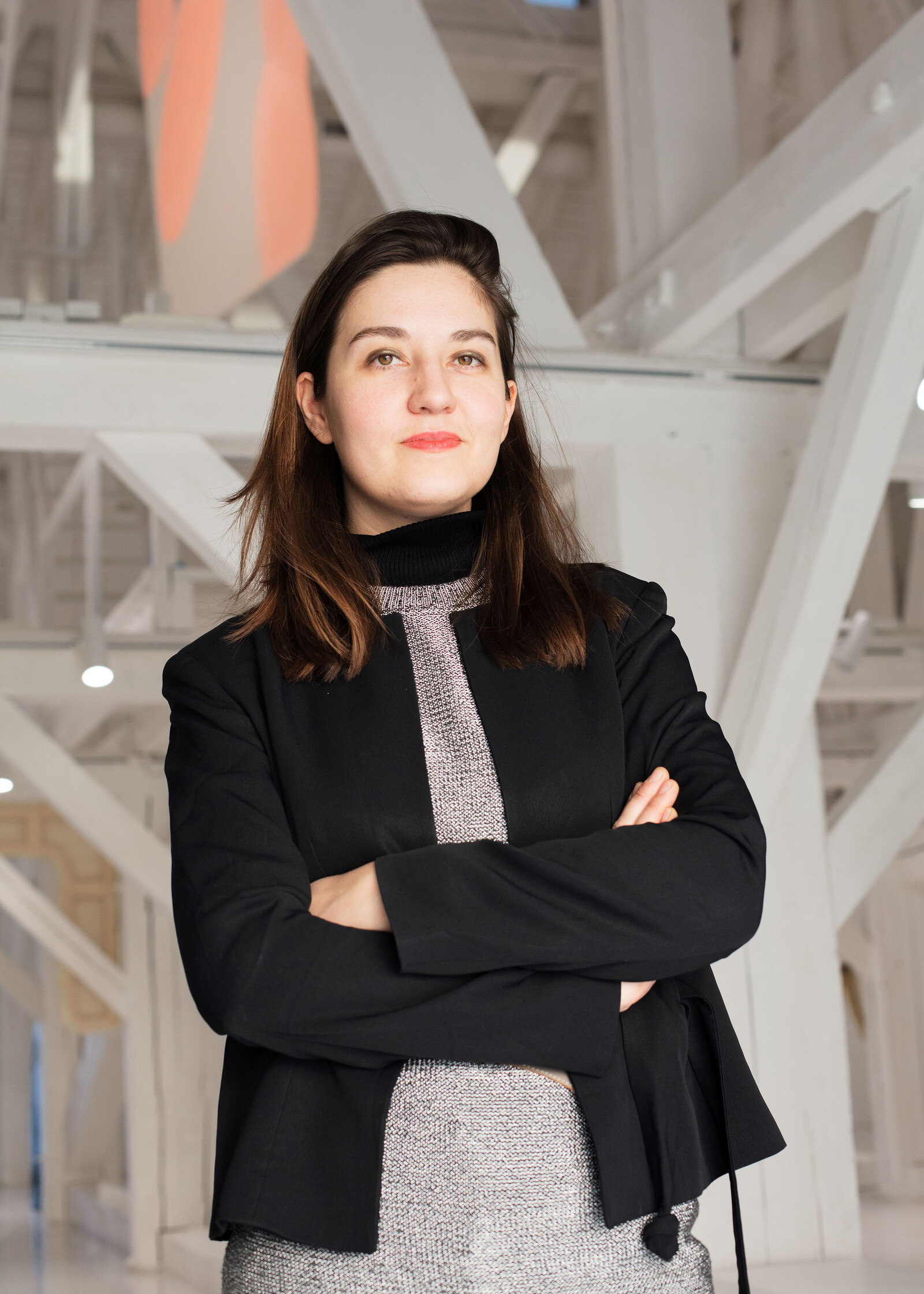o day and night, but this is wondrous strange… and therefore as a stranger give it welcome
April 20–November 24, 2024
o day and night, but this is wondrous strange… and therefore as a stranger give it welcome, an exhibition project by Latvian artist Amanda Ziemele, has been selected in the open competition organised by the Ministry of Culture of the Republic of Latvia to represent Latvia at the 60th International Venice Biennale. Adam Budak, Director of Kestner Gesellschaft, Hannover, will be curating the Pavilion.
About the project
In a subtle though bold act of subversion, Amanda Ziemele transforms the Pavilion’s interior into a living organism, taming space, animating dimensions, and letting us, the viewers, develop a romance of polyphonic space. This is a space of a desired welcome, a habitat of hospitality (in question). Here, a space is both—a promise and a doubt, “upward, and yet not northward”, or as yet another poet would say: “hinauf und zurück”, a heterotopic zone of movement and exploration, a transition towards wondrous simultaneity of a (hyper)spatial experience.
A (silent) master-narrative of Amanda’s project for the Venice Biennale Pavilion—a sort of force of resistance for the libretto of a spatial drama—is lurking in the corner where ideas and concepts germinate: English schoolmaster and theologian Edwin A. Abbott’s novella Flatland. A Romance of Many Dimensions, released in 1884 under the author’s nickname, Square. Part geometry lesson, part social satire, this classic work of science fiction (or a “mathematical fiction” as some call it) aims at playfully enlarging readers’ imaginations beyond the limits of our “respective dimensional prejudices”. Meant as a parody of a Victorian society where all existence is reduced to length and breadth (its inhabitants unable even to imagine a third dimension), Abbott’s tour de force of pseudo-scientific writing is a pean to human knowledge and the imagination at its basis, a witty study of perception and the accessibility of absolute truth.
Following Abbott’s Shakespearian thread: o day and night, but this is wondrous strange… and therefore as a stranger give it welcome, Amanda Ziemele creates a microcosm of embrace and unconditional hospitality under threat. Hers is an emancipatory project: against the preconceived discipline of space, the viewer enters an illusionary hybrid zone of sharing and solace, protection and vulnerability, composed of haptic forms in dispersion and collapse.
Amanda Ziemele’s project for the Latvian Pavilion has been realised in collaboration with the architect Niklāvs Paegle and Agnese Krivade, “a poet not only in words but also in movements.”
About the artist
Precision and modesty equal poetry in Amanda Ziemele’s painterly environments that are choreographed in a masterful way across all parameters of a given space. Here, the painting is a performative act: stripped bare, it wanders across the room, adorns the doorway, levitates over the ceiling, adapting classical architectural components by almost mimicking them in a freestyle embrace. Ziemele perceives her creative activity as an open time. Her interests lie in the formal qualities of painting and the field of ideas and contexts that accompany them. The artist uses spatially referenced installation techniques that create situational associations, using humour as a strategy.
Amanda Ziemele (1990) graduated from the Visual Arts Department of the Art Academy of Latvia, with a Bachelor’s degree in Painting. She completed diploma studies in the study programme of Interdisciplinary and Experimental Painting at the Dresden Academy of Fine Arts and was awarded by the German Academic Exchange Service (DAAD) with a Post-Graduate Scholarship. Since 2016, she has held several solo exhibitions and kas been engaged in various collaborative projects as well as actively participated in exhibitions in Latvia and abroad. Amanda Ziemele received the 2021 Purvītis Prize for her exhibition Quantum Hair Implants. In early 2023, her solo exhibition The Sun with Teeth was on view in the Dome Hall of the Latvian National Museum of Art. Her work can be found in several collections, in Latvia and abroad, including the Latvian National Museum of Art, the VV Foundation and Zuzeum, Riga.
About the project’s architect
Niklāvs Paegle is an architect and educator based in Riga and Vienna. He holds a Diploma from the AA School of Architecture in London. He is the founding partner of the architectural practice ĒTER. His most notable works include the Baltic Pavilion at the 15th International Architecture Exhibition La Biennale di Venezia (2016), the PĒRLE Daycare centre in Cēsis (2021), the exhibition at the Design Museum in London—WEIRD SENSATION FEELS GOOD: The world of ASMR (2022), and leading the project for the Mui Ho Fine Arts Library at Cornell University, NY (2019).
The Commissioner of the Latvian Pavilion: Daiga Rudzāte, Head of the INDIE Culture Project Agency.
For the media inquiries: Signe Lonerte, signe.lonerte@gmail.com


